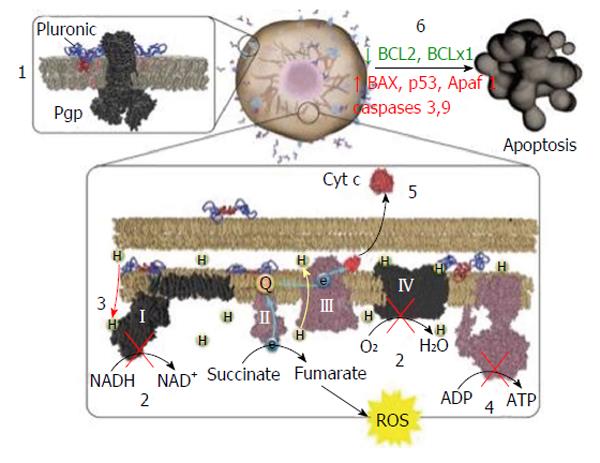Copyright
©The Author(s) 2015.
World J Pharmacol. Mar 9, 2015; 4(1): 96-116
Published online Mar 9, 2015. doi: 10.5497/wjp.v4.i1.96
Published online Mar 9, 2015. doi: 10.5497/wjp.v4.i1.96
Figure 5 Summary of Pluronic effects in cancer cells.
Pluronic binding with plasma membrane of multidrug resistance (MDR) cancer cells (1) induces membrane fluidization, disruption of membrane microdomains, and inhibition of drug efflux transporters’ activity (Pgp shown as an example). Pluronic also reaches mitochondria where it (2, 3) inhibits complexes I and IV of mitochondria respiratory chain and (3) induces inner mitochondrial membrane depolarization. This (4) results in ATP depletion and (5) promotes cytochrome c release and ROS generation in MDR cells. Altogether, the MDR cells respond to a Dox/Pluronic combination by (6) an increased proapoptotic signaling and decreased antiapoptotic defense. Reprinted with permission from ref. [181]. ROS: Reactive oxygen species.
- Citation: Cuestas ML, Oubiña JR, Mathet VL. Hepatocellular carcinoma and multidrug resistance: Past, present and new challenges for therapy improvement. World J Pharmacol 2015; 4(1): 96-116
- URL: https://www.wjgnet.com/2220-3192/full/v4/i1/96.htm
- DOI: https://dx.doi.org/10.5497/wjp.v4.i1.96









